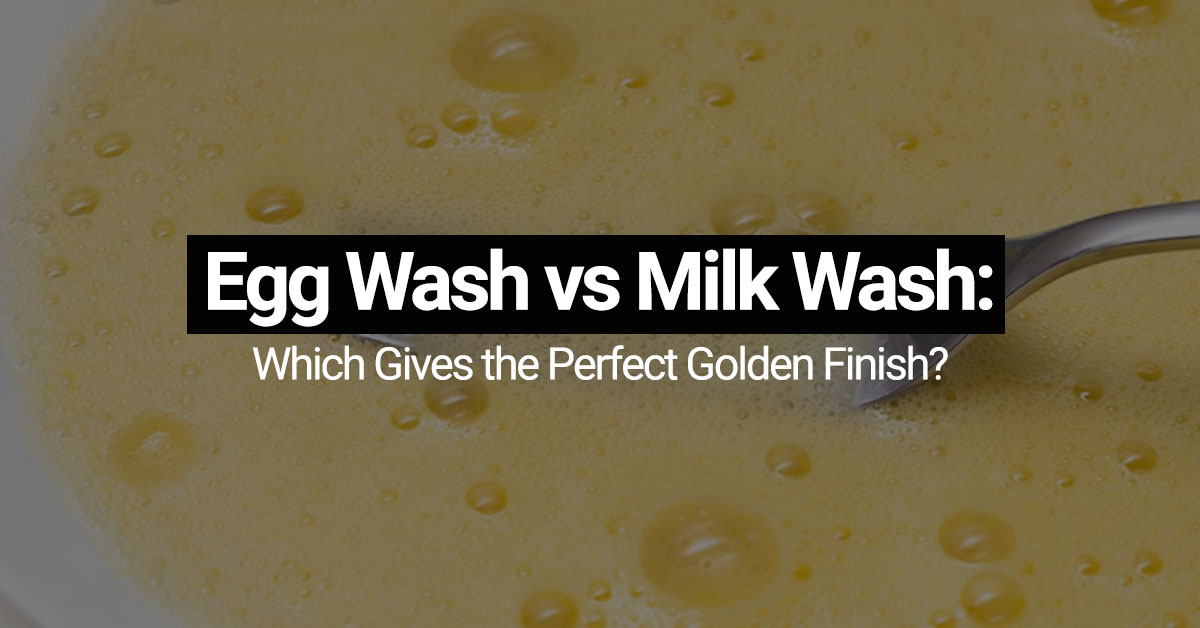One cannot say that a perfect pastry is just about the taste, it is also that amazing golden crust that makes it look like it came from a professional kitchen. But what is it that provides that glow and color? Most times the solution to the problem is one of the easiest baking steps called the wash. No matter if the brush was filled with egg or milk, this step is the one that determines the look of your pastry when you take it out of the oven. And if you have ever been curious about which one will provide the best finish, then you are not the only one.
Students, those enrolled in Our Baking Classes in Chennai, often wonder which wash gives the best finish. To answer that, we are going to look at both methods and what they are best at.
What Does a “Wash” Do?
Before we put these two things side by side it is good to know what a wash does. When you apply a liquid wash to your dough and then bake it, you make a thin layer that changes the color, the texture, and the shine of the product. A wash that is beyond the aesthetics of the product can even change the way toppings that have been put on the dough like seeds or sugar adhere to the surface.
Basically, a wash is the last step that elevates your bake to the next level of beauty.
Egg Wash: For Shine and Rich Color
Generally, an egg wash is a mixture of a whole egg, an egg yolk, or an egg white with some water or milk which is whipped together. Bakers usually modify the mixture depending on whether they want a shiny or browned crust.
The proteins and fats in eggs get caramelized perfectly during baking and as a result, the baked goods get that attractive dark golden-brown color along with a slightly crisp texture. The use of the yolk gives a richer, darker tone with more gloss, whereas the white imparts a lighter, more matte finish.
Egg wash is most effective for:
- Puff pastry
- Pies and tarts
- Dinner rolls and enriched breads
It is the first choice when you want that upscale bakery look – shiny, golden, and perfect for a photo. On the other hand, it should be mentioned that an excessive egg wash can drip and burn at the edges, therefore a light, even application is always the best.
Milk Wash: For a Soft, Gentle Glow
Milk wash can be used as a less intense alternative, a subtler solution that is a preference of the bakers who like the gentle crust of the tender one but are not fascinated by the intense shine. During baking the milk sugars are caramelized, thus the milk imparts a slight golden color and a soft, slightly chewy texture.
Fat and sugar in whole milk make it the best choice for the purpose, while the fatty-free versions result in desaturated products. It is the right choice for a softer finish of the products, for instance, scones, biscuits, and soft rolls.
Milk wash brings:
- A gentle color
- A soft texture
- Mild sweetness
Dissimilar to egg wash, it doesn’t make the crust glossy. Thus, the more rustic, homely, and antique-like appearance of the crust is revealed, which is a characteristic of some recipes that are exquisitely beautiful.
So, Which One Wins?
The answer is contingent upon the item being baked and the desired end result. Should you desire a shiny, rich-golden crust of a pastry with the unmistakable professional bakery look, then an egg wash is the way to go. On the other hand, if you lean more towards a softer and less glossy pastry that radiates with the warmth of home, then milk wash will be the right option.
In the world of professionals, they sometimes mix the two milk or cream with the egg yolk to get a perfect balance of the glossiness and the softness. It’s a small trial that can have a great impact.
Tips for the Perfect Finish
Seamless decorative works will not only require you to select the perfect wash but also apply it properly. No matter which wash you pick, make sure that you use a pastry brush and always apply your brush evenly. That will be the reason for a uniform color and will not allow uneven browning of your item to take place.
Moreover, make the application just before putting the product in the oven. The texture of the dough will alter if the wash has been absorbed by it, henceforth the change in the dough.
Moreover, if you plan on utilizing such toppings as sesame or poppy seed, then you should know that the help of the wash is that they get attached to the surface in a very nice way. On the other hand, egg wash is firmer in holding toppings, while milk wash gives a lighter grip.
Learning to Perfect the Finish
Though recipes indicate the type of wash to be used, true knowledge of the reason is a big thing. It confirms all the senses with its practical training. At our baking classes in Anna Nagar, students don’t only go through the steps, they actually experiment the comparative performance of each wash in different doughs, oven temperatures and timings. Experiencing a croissant changing its character as an egg wash is applied or feeling the shine of a milk-brushed bun coming from the oven makes you acquire the baker’s instinct.


